The majority of B2B SaaS businesses have a major problem when it comes to content writing.
They create a ton of content without direction or structure, publish it on their “blogs” and hope for the best.
This is a waste of time, money and resources.
We are strong believers in building revenue-focused content that drives micro conversions such as booking product demos and sign-ups:
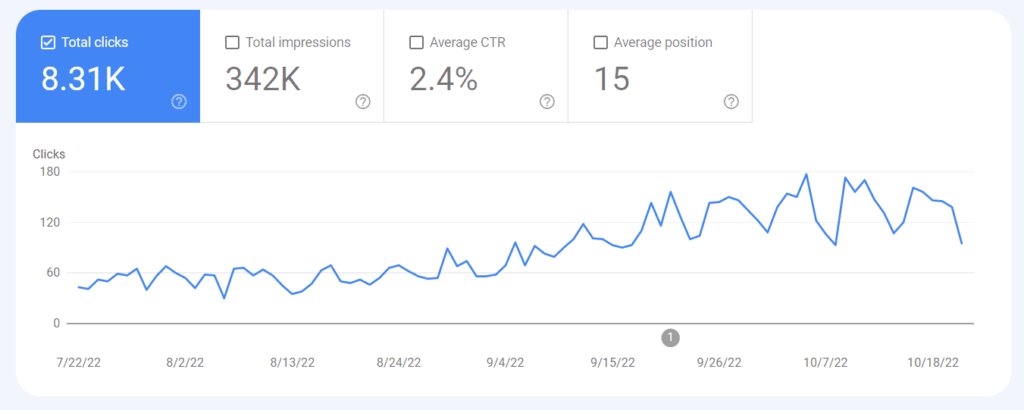
That’s an example of one single piece of revenue-focused content that drove well north of $500k worth of net new business.
So how can you start creating revenue-focused content that actually serves the purpose of driving demos and signups for your product?
Let’s dive in.
In order to have success with content, you need to know your audience.
Period.
Regardless of if you’re focused on SEO, paid ads, organic social – whatever channel – if you don’t know your audience, you’re going to fail.
Assuming you’re not trying to create a new category and you’re in an established market, the audience you’re going to be writing for when it comes to content for SEO purposes is:
This is why it’s crucial that you not only know but are able to learn from your existing customers and you’re writing accordingly for a cold audience that is seeking an immediate solution to their core problem.
Revenue-focused content creation focused on creating content for potential customers that are already problem aware.
Those that are problem aware already know their exact pain and problem.
It’s our job to make them become aware of our solution as a means to solving their pain and problem.
In order to do that, we show that we understand their pain and core problem, and help them to fix it.
Understanding buyer awareness is going to better allow you to know the content types you want to focus on creating if revenue-focused content is your goal.
As stated in the previous section, we want to focus on those potential customers that are problem aware.
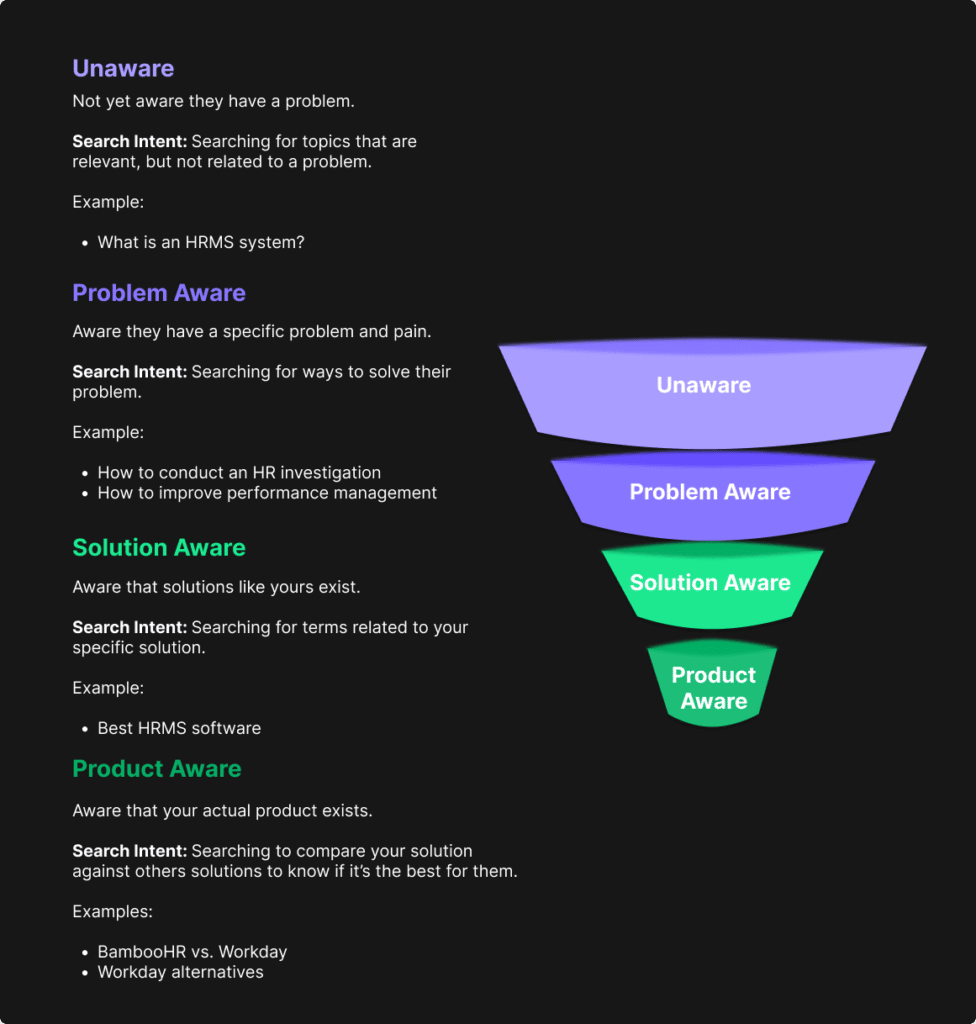
Specifically, when we refer to “content writing” in the sense of SEO, we’re mostly focused on prospects that are problem aware.
Audiences that are problem aware know the pain and problems they have, they simply don’t know that your solution exists. It’s our job to educate them on solving their pain and problem, and start introducing how our solution accomplishes solving that, and how we’ve solved it for others.
Audiences that are solution and product aware are generally where copywriting comes into play, including creating the following pages and assets:
Our focus is going to be problem-aware audiences, where we want to be hyper-focused on creating content using the following content assets:
When we focused on the problem-aware audience with content, this is where we can really capture demos and trials using the power of content (again, not copy – but content).
Here are a few examples of content in the SaaS space focused on a problem-aware audience:
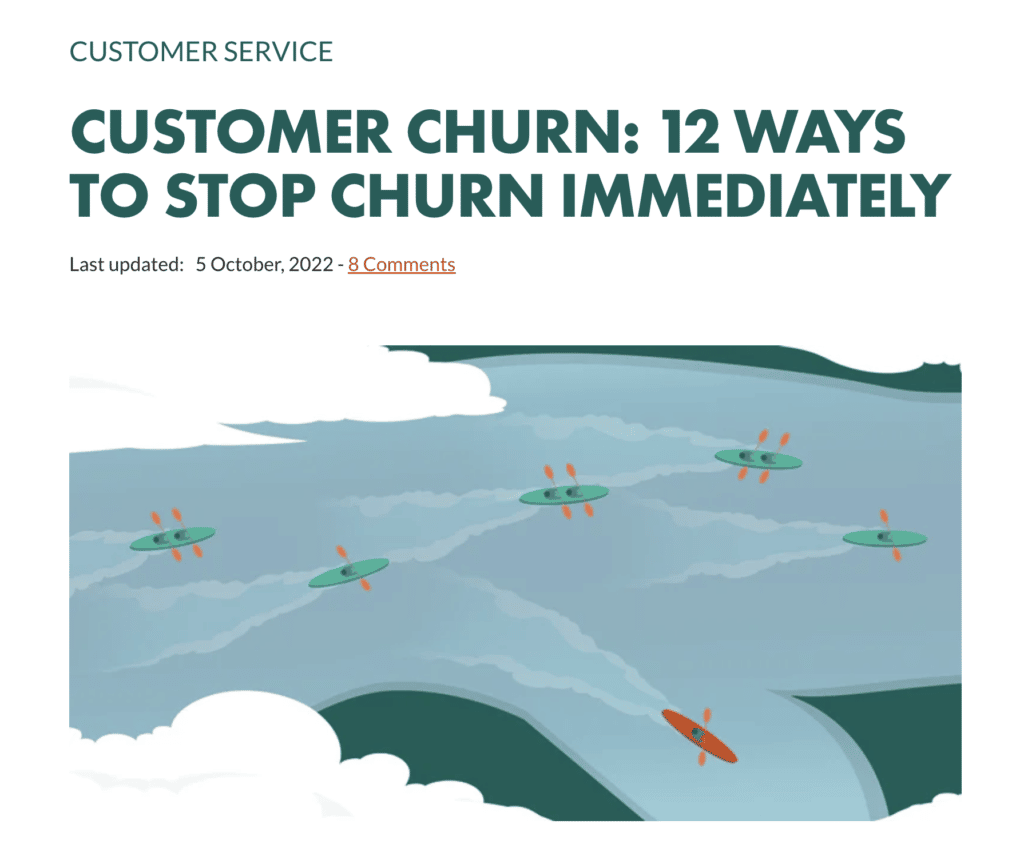
Customer Churn: 12 Ways to Stop Churn Immediately
The core problem: reducing customer churn
The desired outcome: fixing the problem immediately
The article then dives into:
The simple desired outcome, and core problem formula in action.
Another example – Wrike has an entire library dedicated to templates for different positions, such as “Agile Templates”
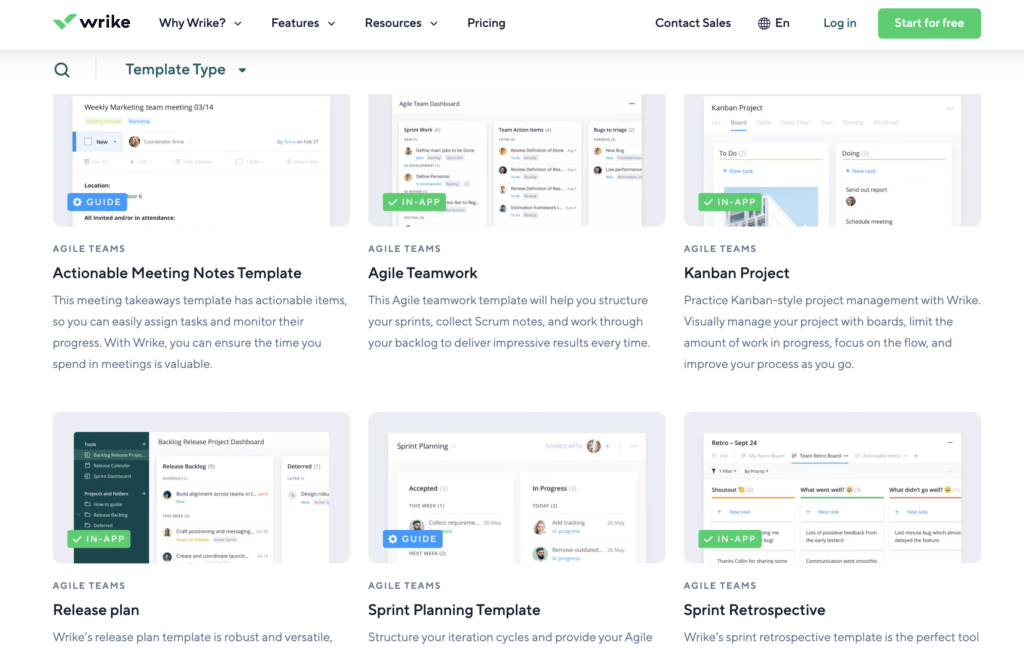
Not only does Wrike focus on capturing searchers that are looking for “agile project templates” but they have multiple templates such as:

This templates can be used by entering a business email, which then takes the users directly into the application to use the template itself.
Again – focused in the problem aware audience:
Wrike’s templates section of their website generated a few thousand visitors per month, has netted them PR and backlinks from websites like Forbes, Business Insider, Nasdaq, generates them hundreds of sign-ups per month by solving this one singular problem for multiple roles and functions.
Related Content: Digital PR & Backlink Building for B2B SaaS
Now that we know what type of content we want to focus on, and have a deep understanding of our audience – let’s get into the framework for building that actual content.
Below is the exact SaaS content writing framework we use to leverage content to drive demos and signups and scale while building-out revenue-focused content
I personally look at dozens of SaaS websites every single day, and I can say in full confidence that if you follow this exact framework, you’re going to be miles ahead of the vast majority of the competition in your space.
Everything starts with your headline.
The headline of your post is going to be the determining factor of whether your content gets the click, or not – regardless of if that’s from Google, LinkedIn, Facebook Advertising, or any other channel.
If you get the headline wrong, you’ve already lost the battle.
So let’s start with winning the battle, and driving clicks to our content.
Here’s the exact formula we use to build an attention-grabbing headline for our audience:
The Headline Formula: Keyword + Expectation + Value + Action
Here’s the breakdown of how to use this formula:
Here’s an example of this formula at play from ClickUp:
“How to Create A Project Timeline In Excel in Under 30 Minutes (With Templates!)”
We want a crispy headline that captures the expectation, value and drives an action to click.
Experiment with your headlines to see which drive a higher CTR over-time.
Great, now we’ve captured their attention and they’re on our page. What’s next?
We have to lead with a great hook to our content to get them to keep reading.
We want to grab their again, give the reader a preview of what we’re about to cover, and back it up with proof.
This let’s our reader know they’re in the right place.
Here’s the exact framework you can use for your hook:
We want to grab our reader’s attention with the first sentence of our content. Our goal here is to keep them reading, and wanting to know more.
This can be accomplished by challenges a common belief, or using a question that provokes a thought.
Remember the exact problem they have that landed them on this page, and think of the specific emotion you want to trigger in your reader.
Next, you want to show your reader they’re in the right place.
Re-confirm to them the problem you’re going to help them solve.
Here’s where you need to back up your words, and build some trust with your reader. Use a quick case study example, or a statistic you’ve built to give them the proof they need to keep reading further.
Remember when you landed on this post?
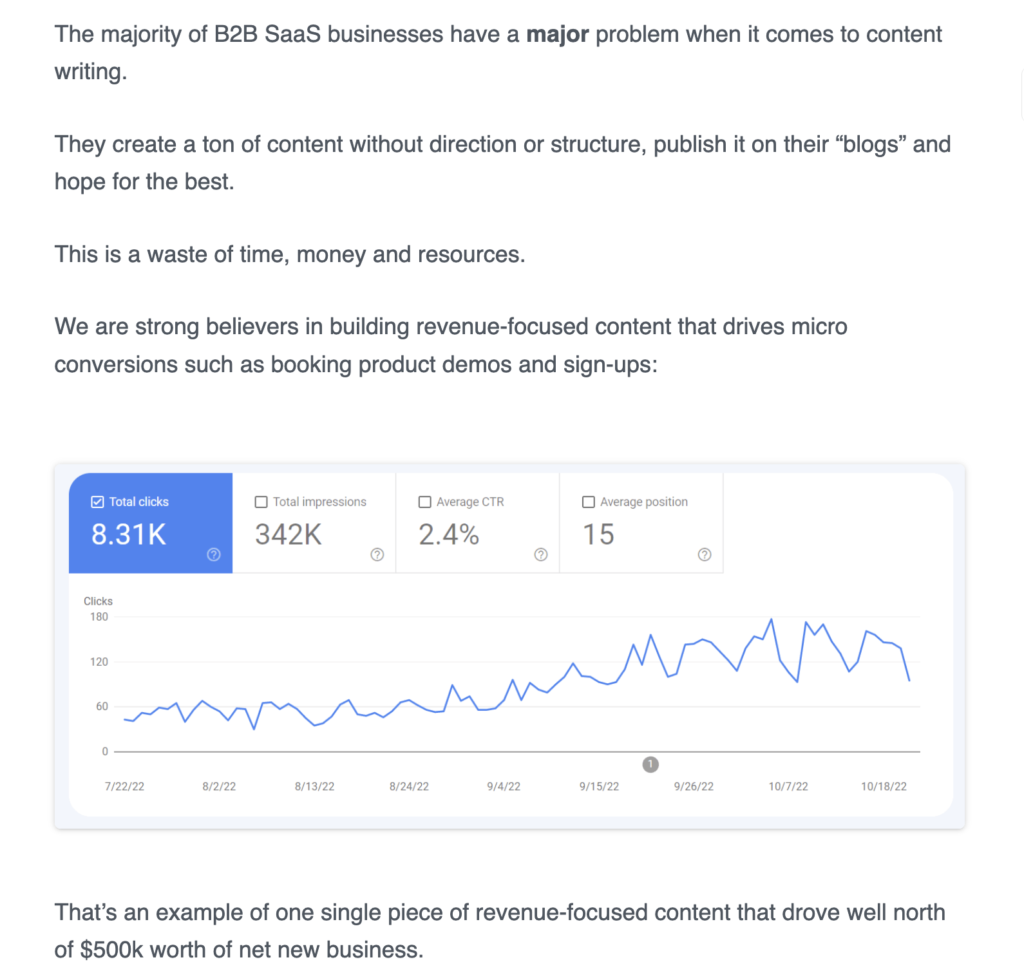
We used this exact formula a put it in action to keep you reading up until this point.
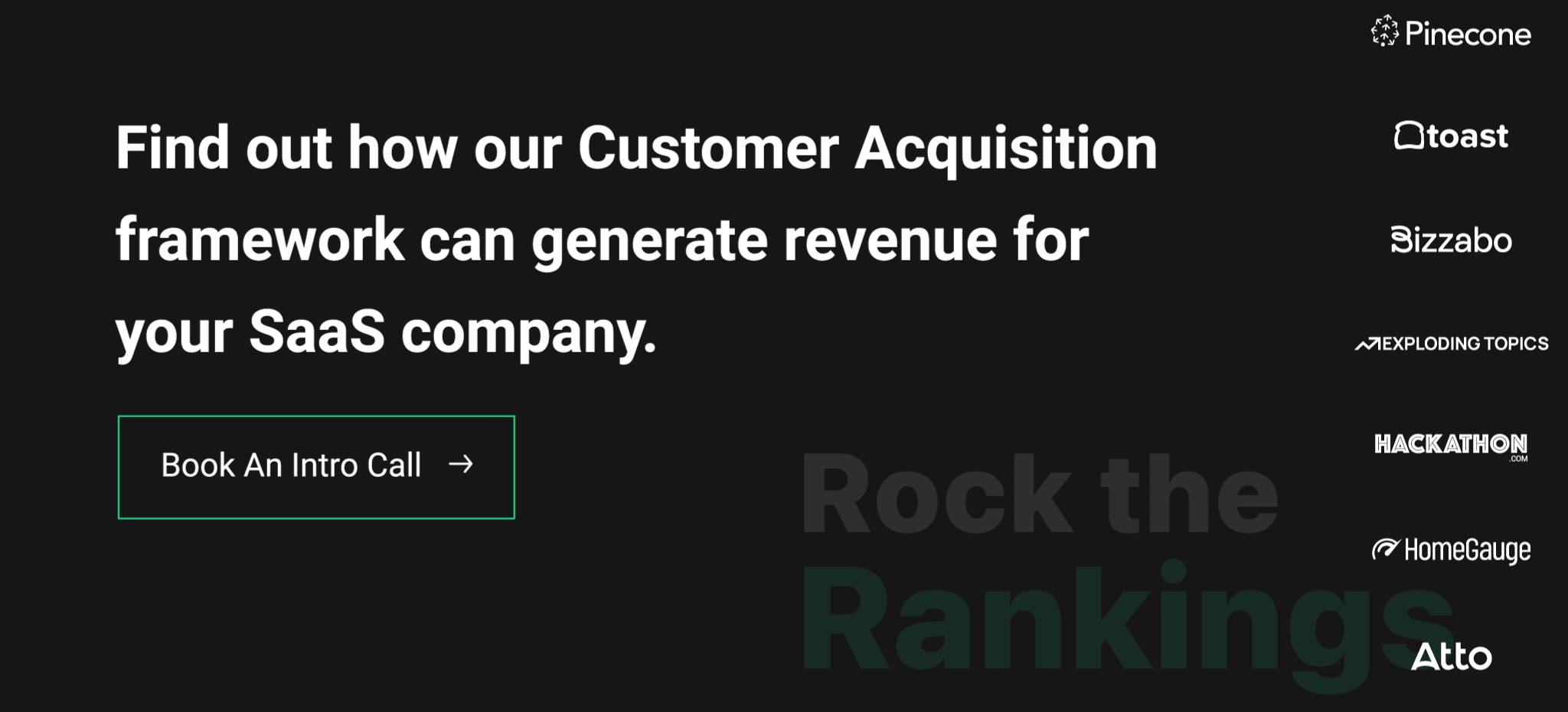
How your post is actually structured is HUGE for search engines like Google, as well as for making your content easily consumable for your readers.
Using headings, including H2, H3, and H4 allow you to break down your post into structured sections which benefit both your readers and Google by:
Optimized post structure is going to bring you big rewards not only from Google, but also from your readers.
Most readers are going to skim your content.
We want to keep our content easy to read as our reader’s eyes are moving down the page.
Content can easily be made skimmable by:
Implement skimmable content and watch how your user engagement skyrocket.
Struggling to grow organic demos signups? Rock The Rankings is a top-ranked SaaS SEO Agency that helps SaaS businesses make organic their customer acquisition engine. We’ll create a free marketing plan for your business, and walk you through step-by-step exactly what needs to be done to grow faster.
In order to get your post to rank in Google, you want to implement the following high-level recommendations.
Insert your primary keyword in:
This is how you can get started with targetting and ranking for a given primary keyword, and topic.
The best place to start, though is building a proper content brief that a writer can use to guide them during the writing process.
When you’re deciding on your target keyword, remember to keep in mind the user’s intent, as well as the search intent for the keyword itself.
Way too often companies dive into writing a content piece that they are trying to rank in Google, without properly first building around the intent of the primary keyword they’re trying to rank for.
That end’s up in a piece of content that was built, and will likely never rank in Google.
Related Content: Keyword Research for SaaS
Remember – we’re writing here for readers, and not for Google or search engines.
Our goal is to keep it natural and remove everything else.
When our readers engage with our content and get value from it – the search rankings will come over time naturally.
Properly using internal links is crucial to having success with:
Yet, internal linking is one of the most underutilized aspects of SaaS content writing.
Internal linking is the process of connecting two different pages of your website.
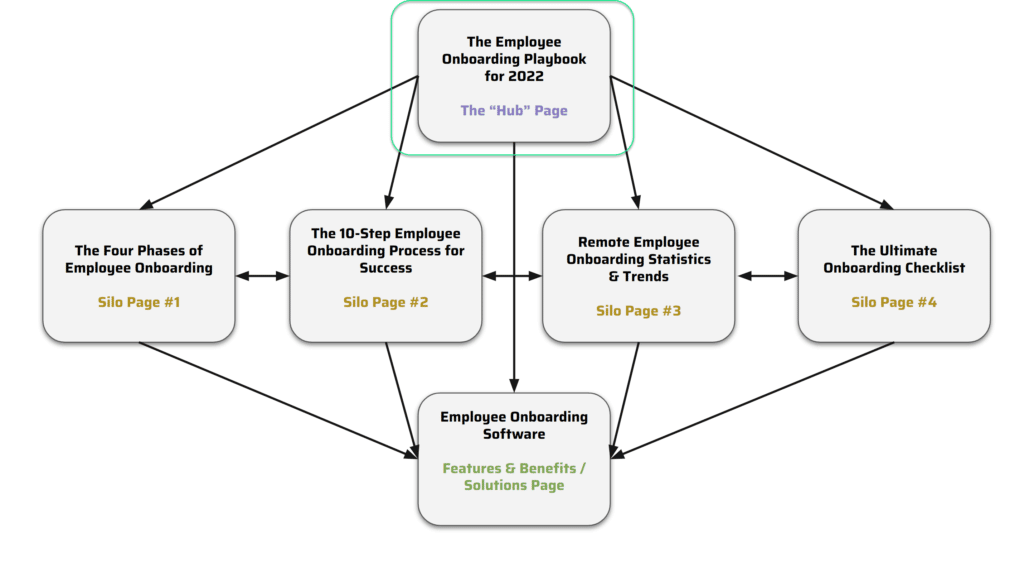
By building internal links, you’re doing both your readers and search engines like Google a huge favor which will contribute to your overall success.
To start with internal linking, here’s what you’ll want to do:
If you’re focused on leveraging SEO with your content writing efforts, you’ll definitely want to build a deep strategy around internal linking and how your content interacts on your website.
This is one of the most beneficial areas you can put your time and resources into when it comes to search rankings.
Related Content: Internal Linking for SaaS
Focus less on backlink building, and more on leveraging your existing content and backlinks to drive search rankings to existing and new content pages using internal links.
Creating great content for your problem-aware audiences alone is not enough.
If you want your content to actually work for you in driving demos and signups, you need to also nail the visual and design component as well.
Design is the glue that brings your content together, and builds an all-around world-class experience for your audience.
Here’s what you need to be doing to get it right:
This is probably the easiest item to implement from this guide but is a huge miss for many SaaS blogs.
Your readers need to be able to actually read your content.
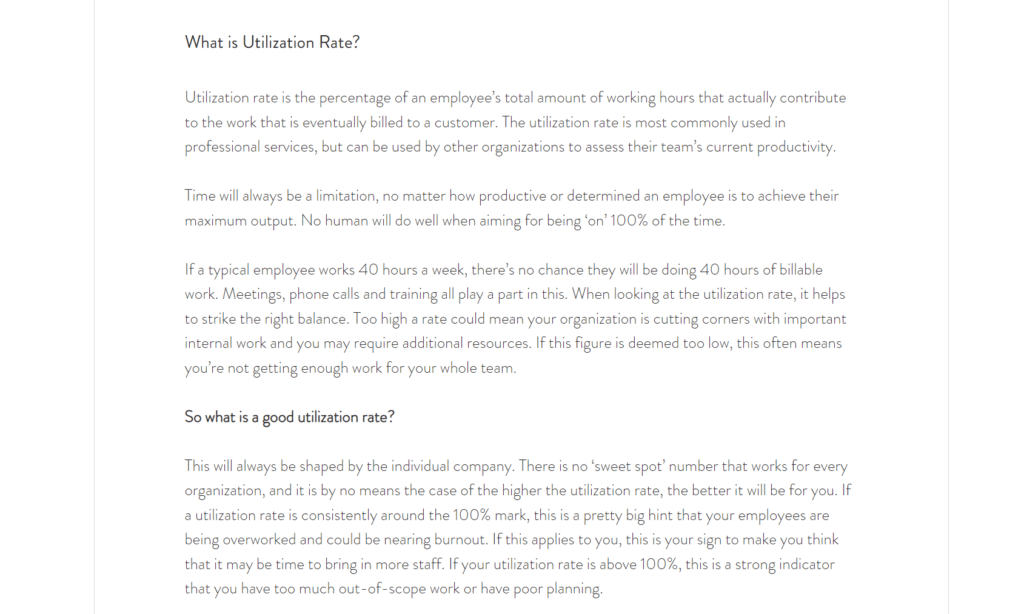
Can you actually even read that content?
Your font size and spacing between lines and paragraphs plays a HUGE role in the legibility of your content and whether users will actually read (or skim) it, or not.
Here’s how you can format your content:
You want your readers to actually enjoy the reading process, and make it easy on them to consume the content.
Here’s a sample from Close’s blog – a super clean reading experience:
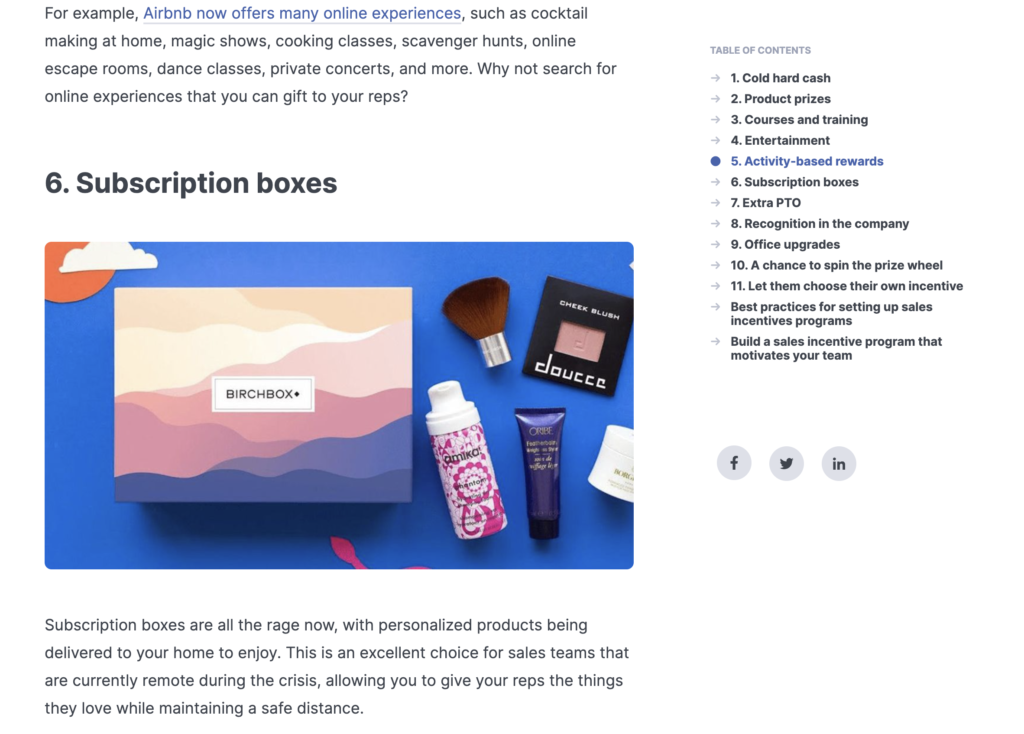
All three of these items take a few minutes in CSS to achieve and can have a huge impact on your reader’s engagement with your pages and content.
If you’re taking the time to build quality content, you need to be adding custom visuals to your content.
Period.
Visuals help to further break up your content, making it even more consumable, and allow you to capture the reader’s attention in a visually appealing way.
Here’s an example from Outreach’s blog of custom designed visuals to match their content:
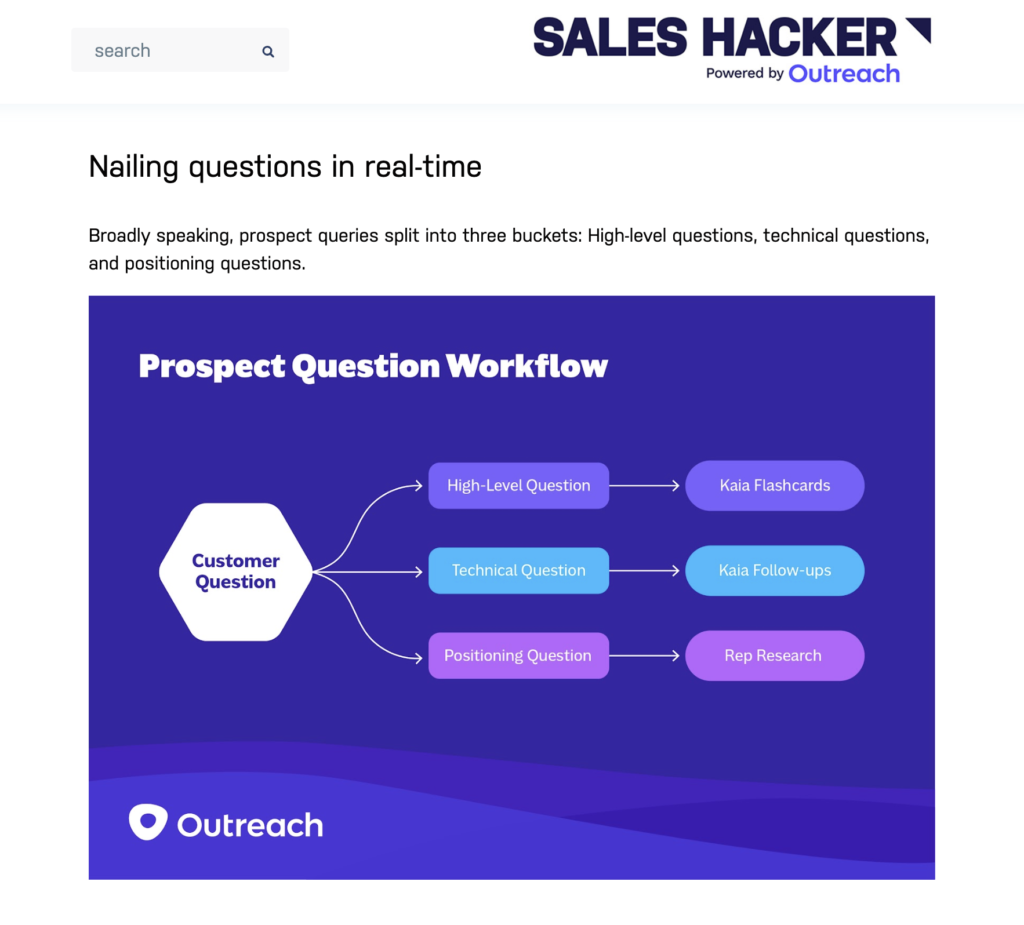
The colors pop out at you, and help to better visualize the content they’re explaining.
Here’s another example from Gong:
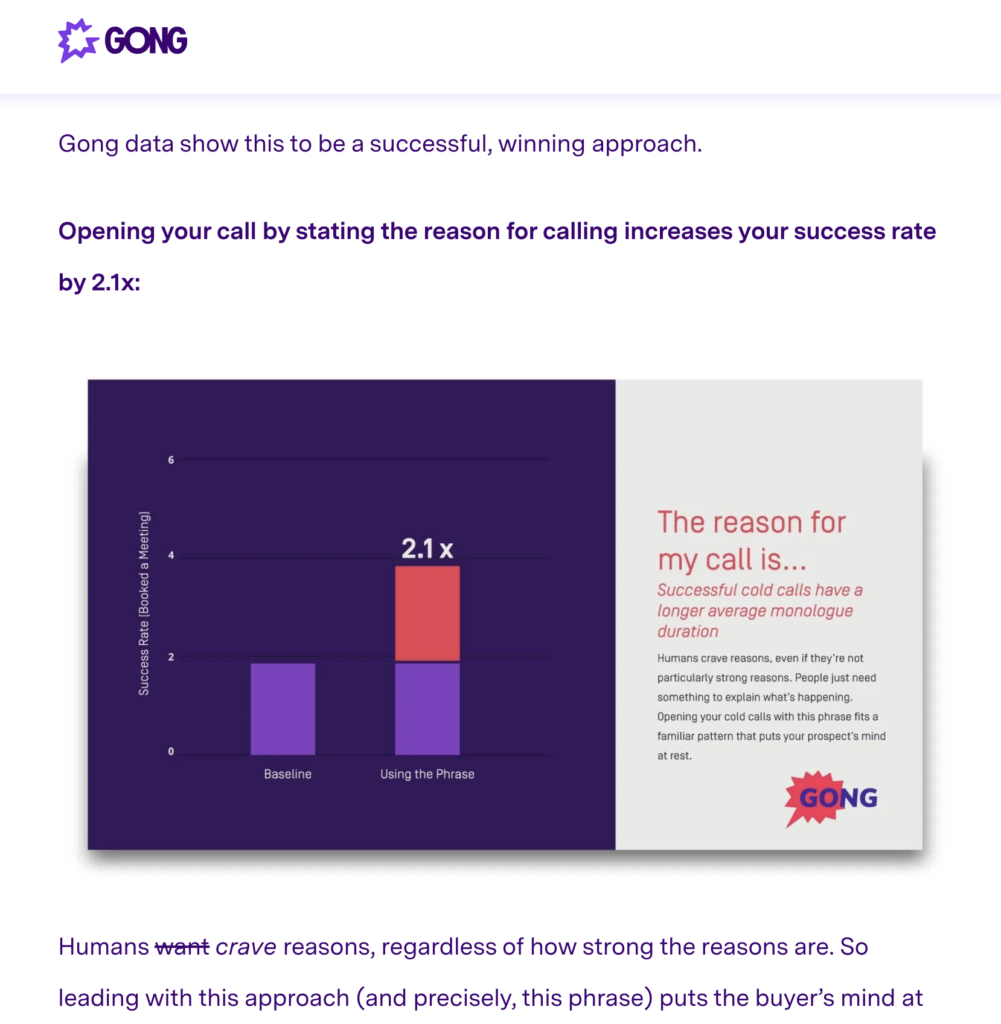
All of these examples are static visuals that can be created with the help of a graphic designer in Figma with not a whole lot of time required.
But these are the little extras that are going to take your content the extra mile.
Adding features sections to your content helps to call out important points you’re trying to make.
Again, they add visual depth to the page and are something that can be created using CSS with minimal time, and re-used over and over again throughout your content pieces.
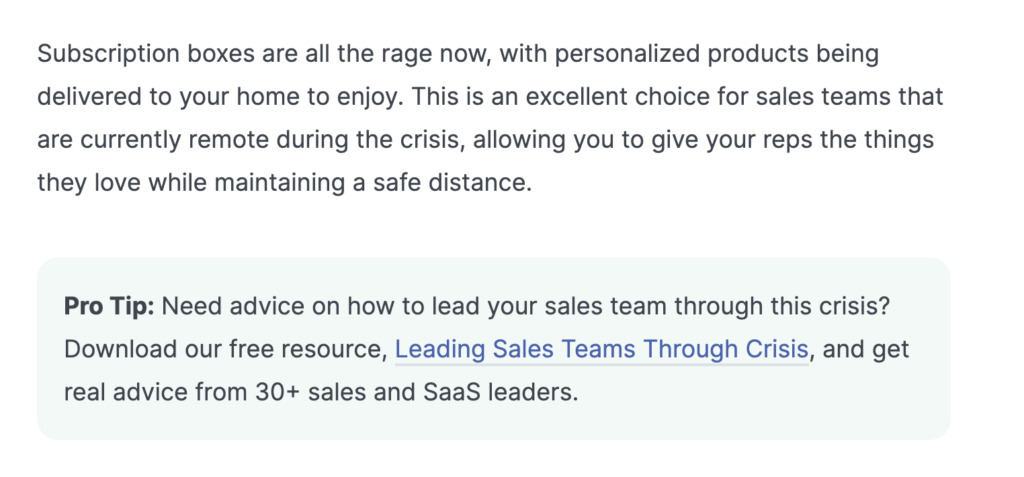
These call outs allow you to highlight important sections of your content, and go well-beyond only rounded boxes.
Adding tables to your content? Great, style it in your brand’s colors.
How about the actual bullets in your content? Easy change to give your page some pop.
Adding a table of contents to your posts allows your readers to quickly navigate to sections that are of most interest to them.
Remember, most readers are usually skimming your content – and they’re also interested in certain sections of the content.
By integrating a table of contents section that’s always within eye’s glance, we provide a great user experience whether our readers are on desktop, or on mobile.
Here’s an example of how X has setup a clean table of contents on their blog:
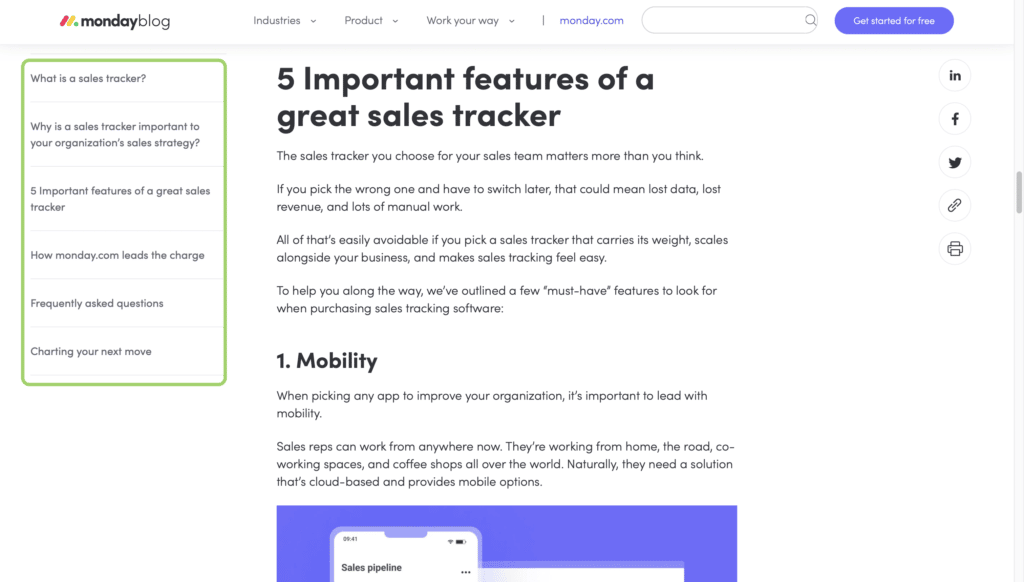
Table of contents are also useful for allowing Google to pull in these links directly into the search results for given queries.
Your content should be geared towards driving your readers to take an action.
Once they read your content, you should tell them exactly what to do next.
That action should be tied to your goal for this specific content piece, i.e. leading them to a great interactive tool you’ve built to solve their problem and educate them further.
Avoid using a boring, over-used call to action and focus on using a call to action that triggers emotion.
Here’s a great example from one of Lusha’s content pieces on prospecting via LinkedIn:
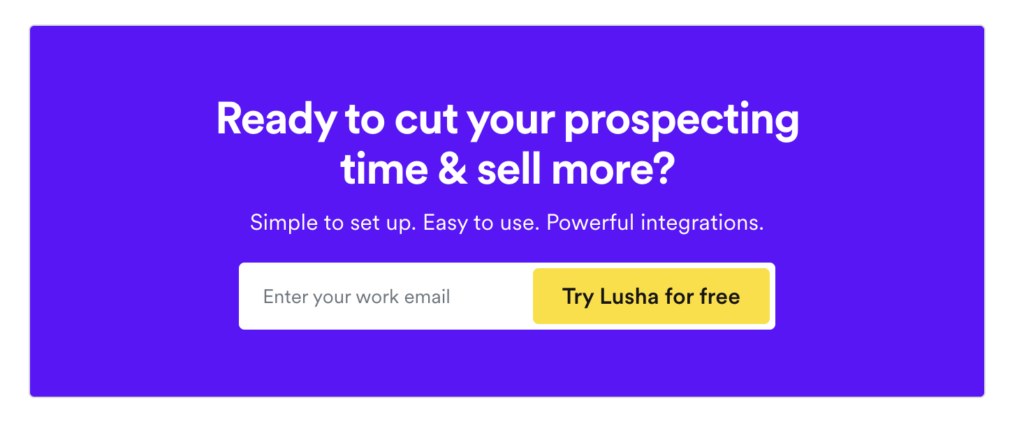
If you know your target audience, and who you’re writing for – you’ll know what benefit and problem they are really looking to solve.
You also don’t want to keep your call to action hidden, or behind a contextual link.
Use an engaging visual to help trigger that emotion, and couple it with writing to drive them to the next step.

I hope this guide showed you exactly how you can create your own revenue-focused content for your SaaS.
Focus on building for your problem-aware audience, and combine the right strategy behind not only building your content but also making it pop with visual best practice and you’ll be driving quality demos and sign-ups much faster.
Founder of Rock The Rankings, an SEO partner that helps B2B SaaS brands crush their organic growth goals. An avid fan of tennis, and growing micro-SaaS businesses on the weekend. 2x SaaS Co-Founder – Currently working to build and scale Simple Testimonial.
Book a 1-on-1 call with our founder and walk away with a custom plan built for your business. Growth starts now.
BOOK INTRO CALL